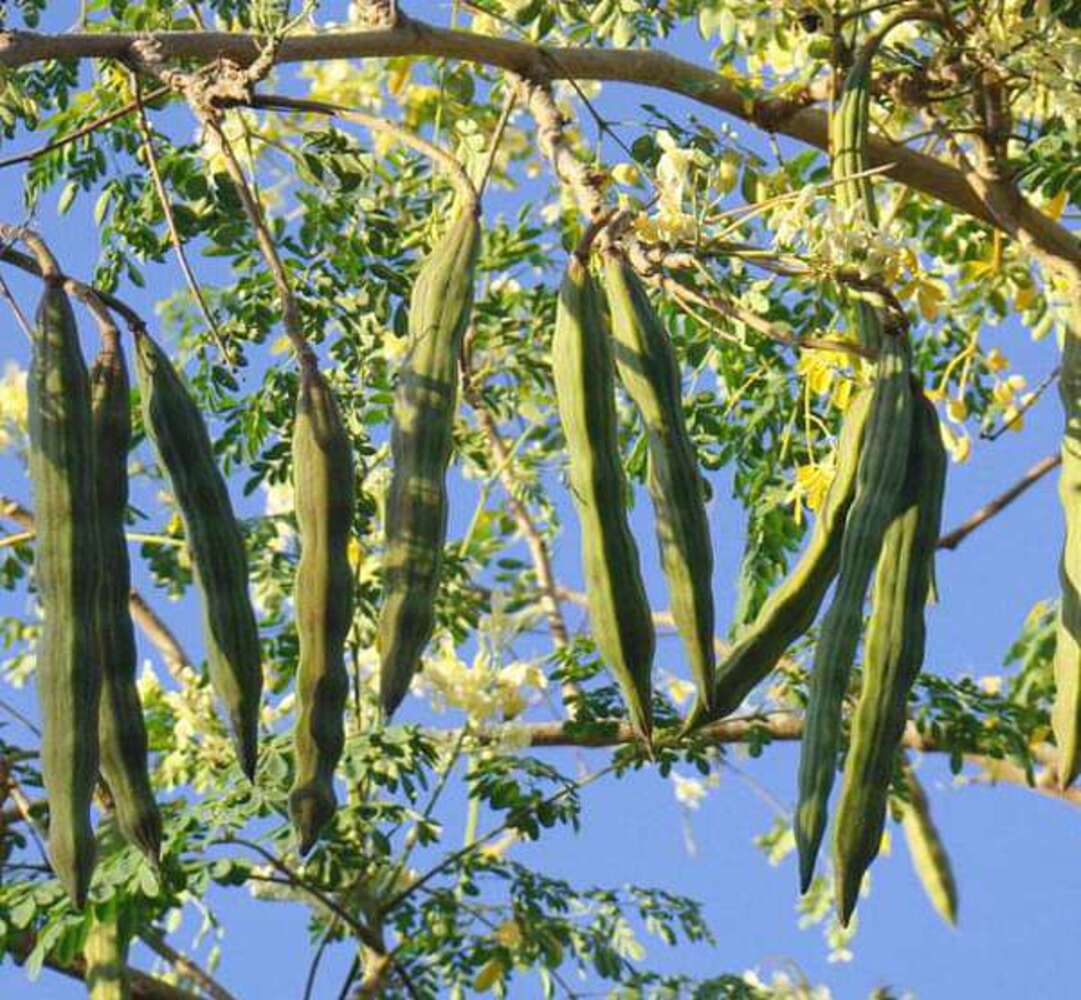Drumstick SuperShort Local
Quantity: 15 seeds
Local drumstick varieties are well-adapted to their native regions, offering resilience and unique flavors that are cherished in traditional cuisines. While they may not yield as heavily as hybrid varieties, they provide substantial nutritional and medicinal benefits. Proper planting, care, and pest management can ensure healthy growth and productive harvests from these hardy plants.
Out of stock
Local drumstick varieties, often referred to as indigenous or traditional varieties, are cultivated in various regions across India and other tropical countries. These varieties have adapted to local climatic conditions and soil types over generations, making them resilient and well-suited to their native environments. Here’s an in-depth look at local drumstick varieties:
Characteristics
Plant
- Height: Local drumstick plants typically grow between 5-12 meters, depending on the region and specific variety.
- Growth Habit: These plants generally have a tall, erect growth habit with less branching compared to hybrid varieties.
- Branches: They tend to have fewer lateral branches but are robust and hardy.
Pods
- Length: Pod length can vary significantly, usually ranging from 30-60 cm.
- Diameter: Pods are generally thicker and more fibrous compared to hybrid varieties, with a diameter of 2-4 cm.
- Color: They are typically dark green to pale green.
- Taste: Local drumstick varieties are known for their unique flavors, which can vary from mildly sweet to slightly bitter.
Yield and Productivity
- Maturity: Local varieties often take longer to mature, usually beginning to produce pods 8-12 months after planting.
- Yield: While they may not yield as heavily as hybrid varieties, local drumstick plants can still produce a substantial number of pods, averaging around 150-250 pods per tree per year.
- Harvesting: The primary harvesting season varies by region but generally falls between October and April.
Growing Conditions
Climate
- Temperature: Local drumstick varieties thrive in tropical and subtropical climates with temperatures between 25°C to 35°C.
- Rainfall: These plants are well-adapted to local rainfall patterns and are drought-tolerant once established.
Soil
- Type: They can grow in a wide range of soil types, including sandy, loamy, and clay soils.
- pH: Prefer a soil pH range of 6.0 to 7.5.
- Drainage: Good drainage is important to prevent root rot, though local varieties can be more tolerant of suboptimal conditions.
Planting and Care
Propagation
- Seeds: Propagation is typically done by seeds, which are sown directly into the soil.
- Cuttings: Stem cuttings are also used, especially in regions where specific local traits are desired.
Planting
- Spacing: Optimal spacing is about 2.5-3 meters between plants and 3-4 meters between rows.
- Depth: Seeds should be planted 2-3 cm deep in the soil.
Watering
- Frequency: Regular watering is necessary during the initial growth phase. Established plants are drought-tolerant but benefit from occasional watering during prolonged dry spells.
Harvesting and Uses
Harvesting
- Pods: Harvest pods when they are young and tender for the best taste and texture. Mature pods can become woody and fibrous.
- Leaves and Flowers: Can be harvested periodically and used fresh or dried for various culinary and medicinal purposes.
Uses
- Culinary: Pods, leaves, and flowers are used in a variety of traditional dishes, including soups, curries, and stir-fries. They are rich in vitamins, minerals, and antioxidants.
- Nutritional: Moringa leaves are known for their high nutritional value and are often used in supplements and health foods.
- Medicinal: Local drumstick varieties have various traditional medicinal uses, including anti-inflammatory, antioxidant, and antimicrobial properties.
Summary
Local drumstick varieties are well-adapted to their native regions, offering resilience and unique flavors that are cherished in traditional cuisines. While they may not yield as heavily as hybrid varieties, they provide substantial nutritional and medicinal benefits. Proper planting, care, and pest management can ensure healthy growth and productive harvests from these hardy plants.
| Weight | 20 g |
|---|







Reviews
There are no reviews yet.